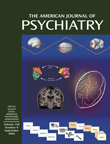A scientific book aimed primarily toward a lay audience is always difficult to write, and this one is no exception. Depending on background, orientation, and the part of the book being read at a given time, it may either engage you, enrage you, or possibly even bore you. The book’s basic premise is that understanding synapses is the key to understanding who we are. “You are your synapses,” and synapses represent the channels of communication between brain cells, which is the means by which the brain does its work. I was put off when I read this premise in the acknowledgments and fully expected to be taken on a superficial and reductionistic journey that could not begin to capture the richness of self and personality. However, as I read further I found an abundance of educational material regarding how the brain develops and how genes and experience interact to affect brain structure and function and thereby memory and “personality.”
The description of brain anatomy is masterful and clear wherever it occurs throughout the book. The relationship of different brain circuits to certain emotions is by now well-known and based in important ways on the author’s own pioneering research. This research builds on and expands generations of earlier research on this and related topics concerning the brain and emotions. It provides a platform for further progress rather than being some kind of end point. Chapter 10 (“Synaptic Sickness”) will be of special interest to psychiatrists, and although there may be little new data in this chapter, the conceptual models provided are well presented and consistent with other integrated views of mental illness. The author argues convincingly against a “soup model”—chemical imbalances—in favor of a more synaptic model, though the reality is that some combination is more likely involved. He provides a very stimulating discussion of how drugs and psychotherapy singly or in combination might work to alter the functioning of circuits rather than just “correcting chemical imbalances.”
On the positive side, this is a wonderful, very readable summary of elegant neuroscience, including its linkage with certain emotional states. However, it is coupled with an overly simplistic presentation of what is “self,” a topic that, although debated for centuries, is obviously more complex than a collection of synapses. The writing in this book is clear, and many of the titles of chapters and sections within chapters are quite cleverly done, although perhaps “off-putting” for some. All in all I highly recommend it as a “good read” for psychiatrists, but be prepared to be provoked as the author describes the richness of human life in synaptic terms.

